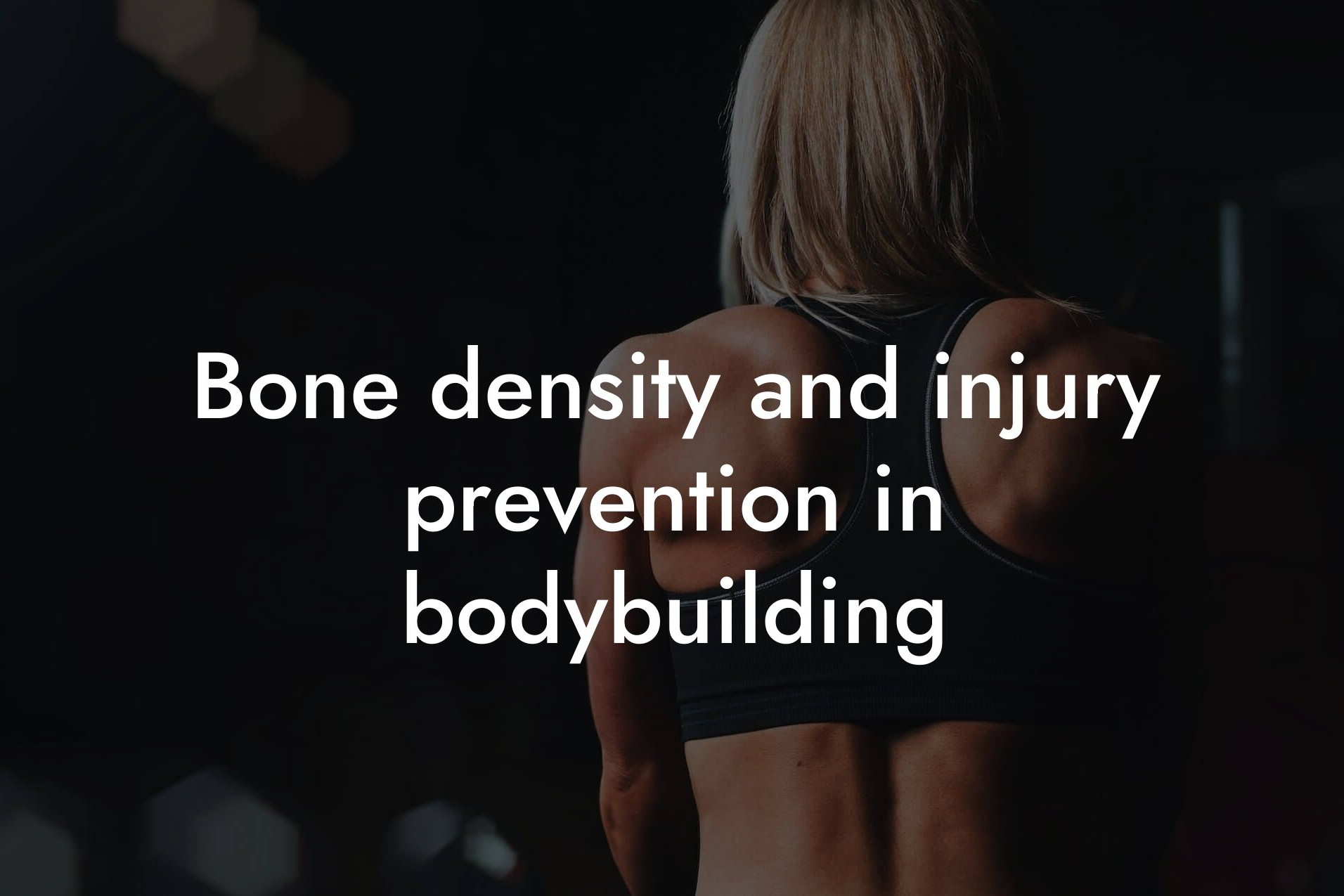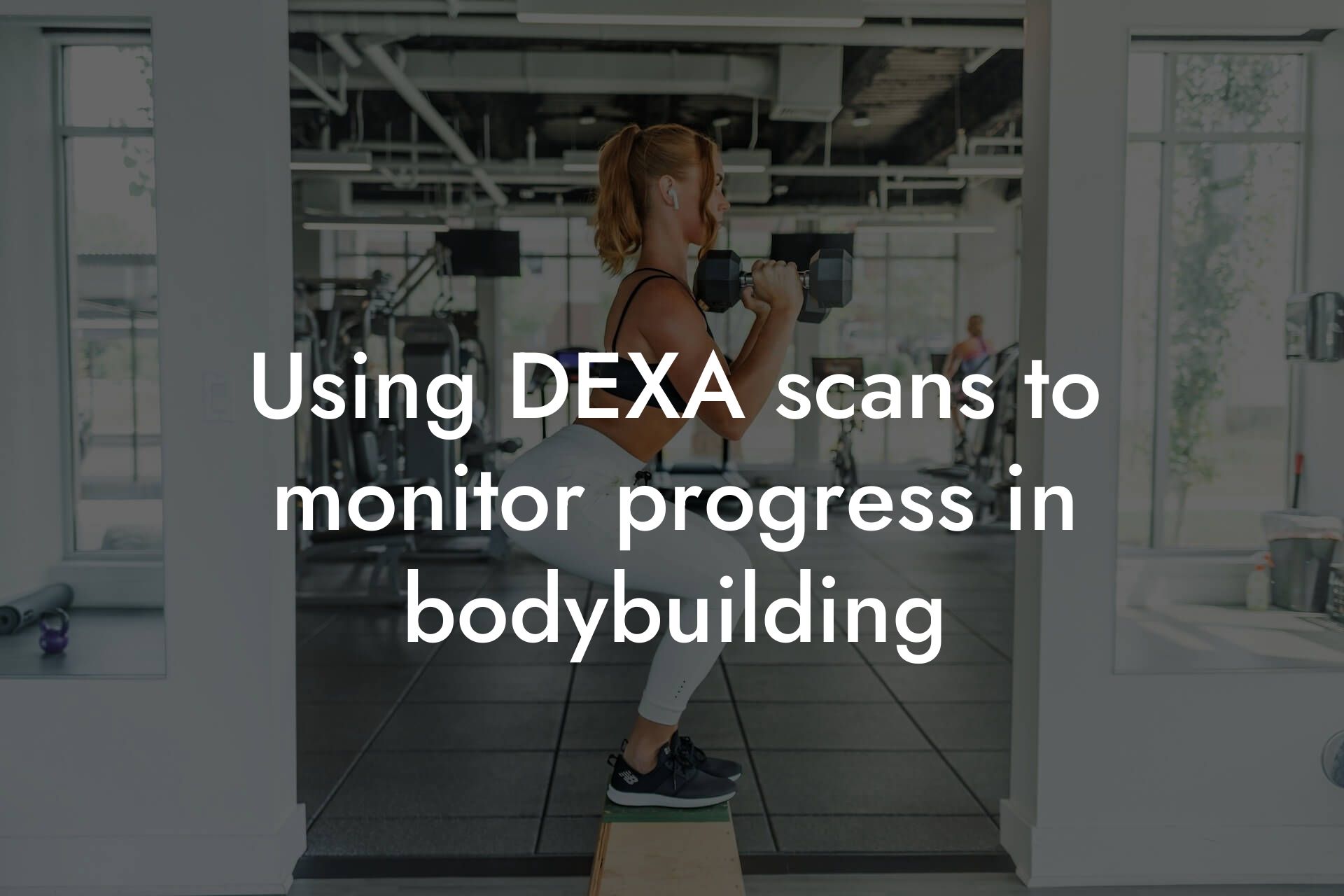As an amateur bodybuilder, it's essential to have a well-structured strength training program to achieve your fitness goals. A good program not only helps you build muscle mass but also improves overall health and well-being. At Tano Performance Group, we understand the importance of a comprehensive approach to fitness, which is why we offer DEXA machine assessments to provide a complete picture of your body composition. In this article, we'll delve into the world of strength training programs, providing you with a comprehensive guide to help you get started on your fitness journey.
Table of Contents
Benefits of Strength Training for Amateur Bodybuilders
Strength training is an essential component of any fitness program, offering numerous benefits for amateur bodybuilders. Some of the most significant advantages include:
• Increased muscle mass and strength
• Improved bone density, reducing the risk of osteoporosis and fractures
• Enhanced metabolism, helping with weight loss and weight management
• Improved joint stability and reduced risk of injury
• Boosted self-confidence and overall mental well-being
Understanding Your Body Type and Goals
Before creating a strength training program, it's crucial to understand your body type and goals. As an amateur bodybuilder, you may fall into one of the following categories:
• Ectomorph: Lean and slender, with a fast metabolism
• Mesomorph: Muscular and athletic, with a moderate metabolism
• Endomorph: Curvy and stocky, with a slow metabolism
Identifying your body type will help you determine the most effective exercises, rep ranges, and nutrition plan to achieve your goals. Additionally, consider what you want to achieve through strength training, whether it's building muscle, increasing strength, or improving overall health.
Creating a Strength Training Program
A well-structured strength training program should include a combination of exercises that target different muscle groups. A typical program should consist of:
• 3-4 sets of 8-12 reps for muscle building and endurance
• 3-5 sets of 3-5 reps for strength and power
• 2-3 sets of 12-15 reps for muscle tone and definition
• A mix of compound exercises (squats, deadlifts, bench press) and isolation exercises (bicep curls, tricep extensions)
• A balance of upper and lower body exercises
• Progressive overload, increasing weight or reps over time to continue making progress
Upper Body Exercises
A strong upper body is essential for overall fitness and aesthetics. Some of the most effective upper body exercises include:
• Bench press: targets chest, shoulders, and triceps
• Pull-ups: targets back, shoulders, and arms
• Dumbbell rows: targets back and biceps
• Shoulder press: targets shoulders and triceps
• Bicep curls: targets biceps
• Tricep extensions: targets triceps
Lower Body Exercises
A strong lower body is crucial for overall fitness and athletic performance. Some of the most effective lower body exercises include:
• Squats: targets legs, glutes, and core
• Deadlifts: targets legs, glutes, back, and core
• Lunges: targets legs, glutes, and core
• Leg press: targets legs and glutes
• Calf raises: targets calf muscles
Core Exercises
A strong core is essential for overall fitness and athletic performance. Some of the most effective core exercises include:
• Plank: targets core and improves posture
• Russian twists: targets obliques
• Leg raises: targets lower abs
• Bicycle crunches: targets entire core
Progressive Overload and Periodization
To continue making progress, it's essential to incorporate progressive overload into your strength training program. This can be achieved by:
• Increasing weight or reps over time
• Changing exercises or rep ranges
• Incorporating different training methods, such as plyometrics or isometrics
Periodization is also crucial, dividing your training into specific phases or cycles to avoid plateaus and prevent overtraining. A typical periodization plan may include:
• Hypertrophy phase: focuses on building muscle mass
• Strength phase: focuses on increasing strength
• Power phase: focuses on explosive power
• Endurance phase: focuses on improving muscle endurance
Nutrition and Supplementation
A well-structured strength training program must be accompanied by a balanced nutrition plan and targeted supplementation. Some of the most important nutrients for amateur bodybuilders include:
• Protein: essential for muscle growth and repair
• Carbohydrates: provides energy for workouts and supports muscle growth
• Healthy fats: supports hormone production and overall health
• Creatine: increases strength and power
• Protein powder: convenient way to increase protein intake
• Branched-Chain Amino Acids (BCAAs): reduces muscle soreness and improves recovery
Creating a strength training program as an amateur bodybuilder can seem overwhelming, but with the right guidance, you can achieve your fitness goals. Remember to understand your body type and goals, create a well-structured program, and incorporate progressive overload and periodization. Don't forget to fuel your body with a balanced nutrition plan and targeted supplementation. At Tano Performance Group, we're committed to helping you achieve your fitness goals, providing you with the tools and resources you need to succeed. Take the first step towards a stronger, leaner, and healthier you – schedule your DEXA machine assessment today!
Frequently Asked Questions
What is strength training and how does it benefit amateur bodybuilders?
Strength training is a type of physical activity that focuses on building muscle mass and bone density through resistance exercises. As an amateur bodybuilder, incorporating strength training into your fitness routine can help you achieve your physique goals, increase muscle mass, and improve overall health. It can also enhance athletic performance, boost confidence, and reduce the risk of injury.
What are the key components of a strength training program for amateur bodybuilders?
A well-structured strength training program for amateur bodybuilders should include a combination of exercises that target different muscle groups, such as chest, back, shoulders, legs, and core. It should also involve progressive overload, which means gradually increasing the weight or resistance to challenge the muscles and promote growth. Additionally, a strength training program should include proper warm-up and cool-down exercises, as well as adequate rest and recovery time.
How often should I train each muscle group as an amateur bodybuilder?
As an amateur bodybuilder, it's recommended to train each major muscle group 3-4 times per week, with at least one day of rest in between. This allows for adequate recovery time and helps prevent overtraining. For example, you can train chest and triceps on Monday, back and biceps on Tuesday, legs on Thursday, and shoulders and abs on Friday.
What are the best exercises for building muscle mass as an amateur bodybuilder?
Some of the most effective exercises for building muscle mass as an amateur bodybuilder include squats, deadlifts, bench press, rows, and lunges. These exercises work multiple muscle groups at once and are compound exercises, which means they recruit more muscle fibers and are more efficient for building muscle.
How do I know if I'm doing strength training exercises correctly?
To ensure you're doing strength training exercises correctly, focus on proper form and technique. This includes keeping your core engaged, using a full range of motion, and avoiding swinging or jerking movements. It's also important to start with a weight that allows you to complete the desired number of reps with proper form, and gradually increase the weight as you get stronger.
What is progressive overload and how does it apply to strength training for amateur bodybuilders?
Progressive overload refers to the gradual increase in weight, resistance, or reps over time to continue challenging the muscles and promoting growth. As an amateur bodybuilder, you should aim to increase the weight or reps by 2.5-5lbs every two weeks, or as soon as you feel you can handle more. This will help you continue making progress and avoid plateaus.
How do I incorporate cardio into my strength training program as an amateur bodybuilder?
As an amateur bodybuilder, it's recommended to limit cardio exercises to 15-20 minutes per session, 2-3 times per week. This can include activities such as jogging, cycling, or swimming. Cardio exercises can help with fat loss and improve overall cardiovascular health, but be careful not to overdo it, as excessive cardio can interfere with muscle growth.
What is the importance of rest and recovery in a strength training program for amateur bodybuilders?
Rest and recovery are crucial components of a strength training program for amateur bodybuilders. During rest and recovery, your muscles repair and rebuild, which is when muscle growth occurs. Aim for 7-9 hours of sleep per night and take rest days as needed. Additionally, incorporate stretching and foam rolling into your routine to aid in recovery.
How do I track my progress as an amateur bodybuilder?
There are several ways to track your progress as an amateur bodybuilder, including taking progress photos, measurements, and tracking your workout logs. You can also use a body fat caliper to measure your body fat percentage. Regularly tracking your progress can help you stay motivated and see the results of your hard work.
What are some common mistakes amateur bodybuilders make when starting a strength training program?
Some common mistakes amateur bodybuilders make when starting a strength training program include not warming up properly, not starting with a weight that allows for proper form, and not incorporating rest and recovery days. Additionally, amateur bodybuilders may focus too much on aesthetics and not enough on proper form and technique.
How do I stay motivated and consistent with my strength training program as an amateur bodybuilder?
To stay motivated and consistent with your strength training program, set specific and achievable goals, find a workout buddy or accountability partner, and reward yourself for reaching milestones. Additionally, focus on the process and celebrate small victories along the way, rather than just focusing on the end result.
What are some common injuries that can occur in strength training for amateur bodybuilders?
Some common injuries that can occur in strength training for amateur bodybuilders include muscle strains, tendonitis, and joint pain. These injuries can often be prevented by warming up properly, using proper form and technique, and incorporating rest and recovery days into your routine.
How do I incorporate nutrition into my strength training program as an amateur bodybuilder?
As an amateur bodybuilder, nutrition plays a critical role in your strength training program. Aim to consume a caloric surplus to support muscle growth, with a focus on lean protein sources, complex carbohydrates, and healthy fats. Additionally, consider working with a registered dietitian or nutritionist to develop a personalized meal plan.
What are some common myths about strength training for amateur bodybuilders?
Some common myths about strength training for amateur bodybuilders include the idea that you need to spend hours in the gym to see results, that cardio is necessary for fat loss, and that you need to take a lot of supplements to support muscle growth. These myths can be debunked by focusing on proper form and technique, incorporating rest and recovery days, and prioritizing nutrition.
How do I balance strength training with other aspects of my life as an amateur bodybuilder?
To balance strength training with other aspects of your life as an amateur bodybuilder, prioritize your goals and focus on consistency rather than perfection. Make time for your workouts, but also make time for rest, recovery, and other activities that bring you joy and fulfillment.
What are some resources available to amateur bodybuilders who are just starting out?
There are several resources available to amateur bodybuilders who are just starting out, including online fitness communities, personal training services, and fitness apps. Additionally, consider working with a certified personal trainer or fitness coach who can provide guidance and support as you start your strength training journey.
How do I know if I'm making progress in my strength training program as an amateur bodybuilder?
To know if you're making progress in your strength training program, track your workouts, measurements, and progress photos. Additionally, pay attention to how you feel, both physically and mentally. If you're feeling stronger, more confident, and seeing changes in your physique, you're likely making progress.
What are some common mistakes amateur bodybuilders make when it comes to nutrition?
Some common mistakes amateur bodybuilders make when it comes to nutrition include not consuming enough protein, not eating enough calories to support muscle growth, and relying too heavily on supplements. Additionally, amateur bodybuilders may not prioritize meal planning and preparation, leading to inconsistent nutrition.
How do I stay accountable and motivated as an amateur bodybuilder?
To stay accountable and motivated as an amateur bodybuilder, set specific and achievable goals, find a workout buddy or accountability partner, and track your progress. Additionally, celebrate small victories along the way and focus on the process, rather than just the end result.
What are some benefits of working with a personal trainer or fitness coach as an amateur bodybuilder?
Working with a personal trainer or fitness coach as an amateur bodybuilder can provide guidance and support, help you develop a personalized workout and nutrition plan, and increase accountability and motivation. Additionally, a personal trainer or fitness coach can help you identify and correct form and technique issues, reducing the risk of injury.
How do I incorporate flexibility and stretching into my strength training program as an amateur bodybuilder?
To incorporate flexibility and stretching into your strength training program, make time for stretching exercises after your workouts, and prioritize activities such as yoga or Pilates. Additionally, incorporate foam rolling and self-myofascial release into your routine to aid in recovery and reduce muscle soreness.
What are some common misconceptions about strength training for amateur bodybuilders?
Some common misconceptions about strength training for amateur bodybuilders include the idea that strength training is only for athletes, that you need to be young to start strength training, and that strength training is only for men. These misconceptions can be debunked by focusing on the benefits of strength training for overall health and fitness, regardless of age or gender.
How do I make adjustments to my strength training program as an amateur bodybuilder?
To make adjustments to your strength training program, regularly assess your progress, and make changes as needed. This may include increasing the weight or reps, changing your exercise routine, or incorporating new exercises. Additionally, listen to your body and take rest days as needed, and prioritize recovery and nutrition.
Here are some related articles you might love...
- Bone density and injury prevention in bodybuilding
- Using DEXA scans to monitor progress in bodybuilding
- The role of body composition in bodybuilding success
- Nutrition strategies for muscle gain and fat loss in bodybuilding
- The importance of muscle symmetry in bodybuilding
- Recovery strategies for amateur bodybuilders
- Reducing body fat for competition in bodybuilding
- Off-season bulking and cutting cycles for bodybuilders
- How to optimize muscle growth with proper nutrition
Zak Faulkner
Zak Faulkner is a leading authority in the realm of physical health and body composition analysis, with over 15 years of experience helping professionals optimise their fitness and well-being. As one the experts behind Tano Performance Group, Zak has dedicated his career to providing in-depth, science-backed insights that empower clients to elevate their physical performance and overall health.
With extensive knowledge of DEXA technology, Zak specializes in delivering comprehensive body assessments that offer precise data on body fat, muscle mass, bone density, and overall physique. His expertise enables individuals to make informed decisions and achieve their fitness goals with accuracy and confidence. Zak’s approach is rooted in a deep understanding of human physiology, combined with a passion for helping clients unlock their full potential through personalised strategies.
Over the years, Zak has earned a reputation for his commitment to excellence, precision, and client-focused service. His guidance is trusted by top professionals who demand the best when it comes to their health. Whether advising on fitness programs, nutritional strategies, or long-term wellness plans, Zak Faulkner’s insights are a valuable resource for anyone serious about taking their health and fitness to the next level.
At Tano Performance Group, Zak continues to lead our Content Team revolutionising how professionals approach their physical health, offering unparalleled expertise that drives real results.




